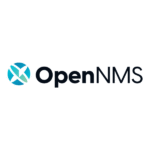OpenNMS — When the Network’s Too Big to Fake Visibility
Some networks are simple. Others have grown wild — stitched together from gear that spans vendors, generations, and naming conventions that don’t make sense anymore. In setups like that, the old tricks — ping, a few scripts, maybe a dashboard — just don’t cut it. That’s where OpenNMS holds its ground.
It’s not lightweight. It’s not quick to set up. But it sees everything: links, devices, flows, logs, services, and behavior over time. If something talks over IP, chances are OpenNMS can track it — and keep tracking it when other tools give up.
It’s not for show. It’s for knowing what’s actually happening.
What It Watches — and Why It Matters
| Thing It Does | Why That’s Useful in the Real World |
| Network Scanning That Sticks | Finds nodes, ports, interfaces — and keeps the map current. |
| Multi-Protocol Polling | SNMP, ICMP, WMI, JMX — all in the same graph, same alert logic. |
| Custom Threshold Rules | Not just “is it up?” but “is it working right?” — per device, per metric. |
| Log and Flow Ingestion | Picks up NetFlow, sFlow, syslog — all tied to device behavior. |
| Grafana-Compatible Metrics | Pipes data into dashboards that teams already use. |
| Scriptable Alerting | Alerts don’t just trigger — they run scripts, notify teams, kick off chains. |
| API for Everything | Want to automate node setup? Query outages? All doable with REST. |
| Scales Without Drama | One server? Fine. Distributed collectors across cities? Also fine. |
Where It Ends Up Being the Right Call
OpenNMS usually shows up when the old system breaks. Or when the spreadsheet with IPs and hostnames stops making sense. It’s the tool that takes over when:
– There’s a mix of hardware, OSes, cloud, on-prem, and nobody’s quite sure what’s where.
– Uptime isn’t a KPI — it’s a requirement.
– SNMP traps are flying, logs are noisy, and nobody has time to parse anything manually.
– The existing toolset either costs too much or hides too much.
– Someone says, “we need actual insight, not just green lights.”
It’s not pretty. But it’s thorough.
How It Gets Running (Short Version, No Sales Talk)
- Install the Base
Java-based, PostgreSQL in the back. Most modern Linux distros have packages. Runs cleanly as a service.2. Set the Scan Zone
Pick the subnets, SNMP creds, and what counts as “monitored.” Then let it crawl. Give it time.3. Poll and Collect
Add modules or config snippets for whatever’s weird in the setup — custom OIDs, Windows counters, JVM metrics.4. Build the Alerts That Matter
Not all devices are equal. Thresholds can be tuned down to the interface, the hour, or the traffic type.5. Make the Data Useful
Graph it. Export it. Feed it to Grafana. Or just pull it with curl — whatever fits the workflow.6. Spread It Out
Need regional polling? Drop a Minion (collector) in another site and route data back. Scales horizontally.
Final Words (No Brochures)
OpenNMS isn’t fast to set up, but it earns its place. It’s not glossy, and it won’t win UX awards — but when it’s configured right, it doesn’t miss. It catches patterns, not just pings. It stays up. It doesn’t phone home. And it doesn’t hide behind paywalls.
It’s built for the kind of networks where guessing is expensive — and where someone, somewhere, needs to know exactly which interface dropped at 2:47 a.m., and why.






